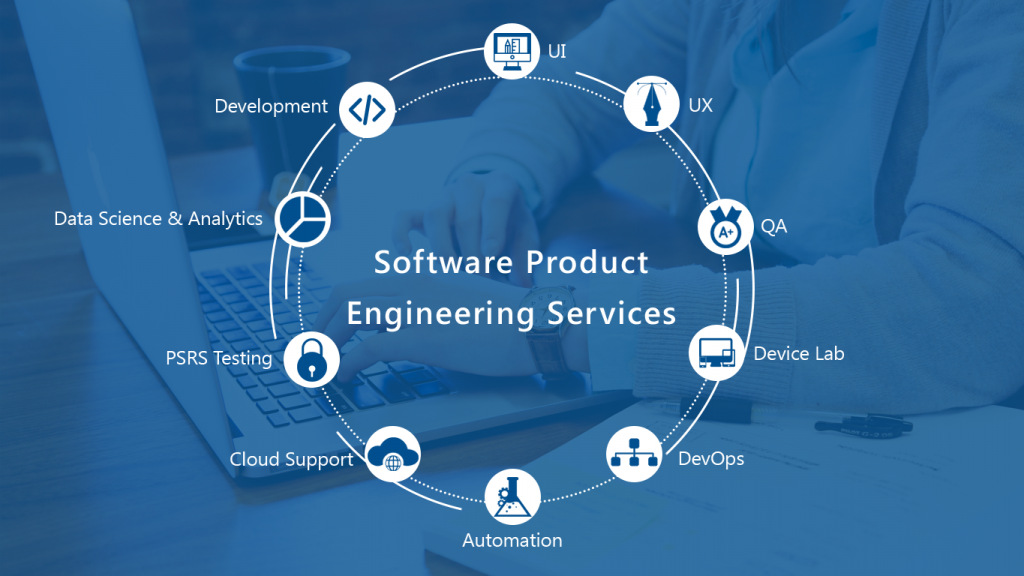In 2022, The state of "software product engineering services" will be assessed.
-
Products
The state of "software product engineering services" will be assessed.
Today's software product engineering services require a continuous renovation. IT professionals are always on the lookout for better and fresh technology to replace the outdated ones and this is what is causing a revolution within the IT industry. Creating or developing something that was previously unimaginable and unachievable was a few years ago.
software product engineering service

The latest software product engineering service trends which have had a significant effect on how software products are viewed will be the focus of this blog.
1. SDx - Software-defined everything
Conceptually, software-defined everything forces all the components of the tech ecosystem to operate in sync to obtain the desired result for the business, thereby addressing operational silos.
Hardware that is proprietary naturally creates system silos. What works for one department on one server is not interoperable with other departments. IT teams often face operational nightmares.
The core of a software-defined structure is agility, wherein the software function and hardware can be decoupled as well as new features and functions can be integrated easily.
Exactly why does the industry have to shift from a hardware-defined perspective to a software defined mindset?
In a Software Defined Everything (SDE / SDx) environment, administration and control of networking, storage, data center infrastructure etc. are automated by smart software instead of hardware infrastructure components.
Switching to a software-defined everything structure can bring great benefits for Vox, according to them.
Simplification -ASPTurn your legacy software system into a more flexible, automated software product.
Reduced costs -It changes the budget from CapEx (capital Investments) to OpEx (operating Expenses), which is more scalable and economical.
Cloud-based -It secures almost all data to a cloud based server and reduces the time required for new app integration and delivery.
Access control –Filters data, establishes security and privacy settings, and defines access levels.
Security -Securing the information provides ultimate threat protection and keeps the data or info secure and private.
Checks the system -It at the same time monitors all software-defined systems, together with the IoT (Internet of Things) and wireless access points of the PCs.
2. Software development using low-code and no- code techniques.
Software development with a low code or no code approach is the main trend in software engineering product development in the near future. The task of developing a software product is extremely complex and time - sensitive, which means constant pressure on the developers.
As a result, low- code and no- code products have become extremely popular in the software development world. Software product designers can create and deliver solutions into several deliverables using low-code and no-code options.
What's the difference between low code and no code software development?
Low code development provides a break from technical and coding nuances for coders and developers; The low-code development platform comes with a visually illustrating interface which allows the developer to quickly develop applications or a component of an application, thereby speeding up the entire software product development process. TestingWhiz, for example, offers a drag and drop functionality that enables you to easily automate your code testing with a typical code testing automation platform. The tester or user can quickly create test cases with its intuitive automation engine.
No-code creation goes one step more. Although a low-code platform calls for specialized information and also makes product development somewhat simple for the programmers, no-code platforms are for business users that wish to resolve an issue with the very best user experience possible while totally abstaining from specialized and coding details. With no-code application development, even non-technical people are able to create applications, ultimately boosting the productivity of professional designers who could concentrate on more complex and strategic areas of the program development lifecycle.
3. Internet of Things
IoT is a congruous system of digital and mechanical computer systems, objects or UIDs (unique identifiers). It enables the transfer of information over a system without the need for human interaction with a computer or human to human interaction, which reduces labor costs. The web is the common element among all the elements that make up a modern, cutting edge work environment.
IoT is like a huge web of interconnected devices, providing a bird's eye view of each module component, which allows exact and accurate tracking, tracking and evaluation. The current trend reflects the connection of gadgets to human value. The emphasis is now on bringing stakeholders tangible and intangible value. It is all about improving the customer experience, producing value for stakeholders and improving social and people is lives, whether it is within their capacity as workers, citizens, investors, consumers, and so forth. I-Scoop discusses the concept in a self- explaining image.